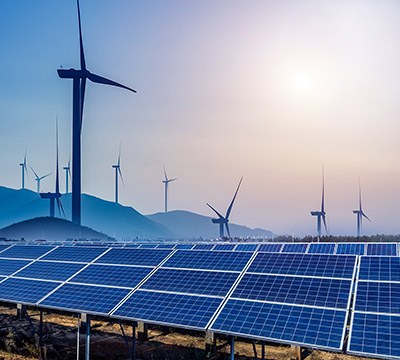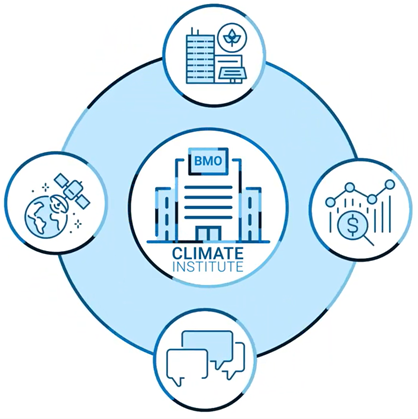BMO: Learning Along the Road to Net Zero

BMO: Learning Along the Road to Net Zero
Becoming one of Canada’s first banks to be carbon neutral in 2010, we have had more than a decade to hone our three-pronged strategy to reduce the carbon footprint of our operations: cutting emissions, investing in renewables and purchasing carbon credits.
Each of these are critical to achieving carbon neutrality, but what has been clear from the start is that it’s the reduction of emissions, that must be the primary and fundamental pillar to our strategy.
We are constantly improving along the way, using less and less energy, but the so-called “Road to Net Zero” is paved with lessons about how far we have come, how far we still need to go and, most of all, thinking beyond neutrality to truly transition to a sustainable world.
As a bank, most of our direct environmental impact is a result of emissions from the buildings we occupy, including anything from electricity to natural gas, diesel and other contributors to our carbon footprint, and the remainder is largely the result of business travel.
Today, we track and analyze our Scope I and 2 GHG emissions, and our Scope 3 GHG emissions associated with waste generation and business travel. We have set and achieved four successive, multi-year enterprise-wide emission reduction targets since 2008, and in 2021 we set a new target to reduce operational GHG emissions by 30 percent by 2030 using a 2019 baseline. We are making progress towards this target by investing in energy-saving initiatives such as lighting retrofits, heating and cooling infrastructure upgrades, and building operational efficiency improvements.
Community-Focus
While reducing emissions must be the first and fundamental pillar, for us and other organizations, it cannot be the only one, and that’s why, for the remainder that we cannot reduce, we turn to the other two prongs in our strategy.
Under our second pillar to achieving carbon neutrality, for the first time, last year we committed to matching 100 percent of our electricity use with renewables. The strategy entails purchasing renewable energy certificates from renewable projects like solar, low-impact hydro, and wind to offset the electricity we use in our operations.

For all remaining emissions, we are buying carbon-avoidance based offsets, with a view to diversifying our offset portfolio to include offsets that are carbon removal based. In keeping with our stated goal to bring our purpose to our actions and to “Boldly Grow the Good” in business and life, we have always made sure that our offsets are community based, in smaller towns, and Canadian. In this way, as well as environmental benefits, we are driving social sustainability, enabling jobs in the places where we live and where we work. We are also injecting money into the market, using our buying power to incentivize the growth of lower carbon alternatives, and helping to create a virtuous cycle.
Carbon Offset Conundrum
Of course, existing carbon offsets are not enough, and the world needs to increase the availability of carbon removal offsets.
At present, organizations are focusing mostly on nature-based carbon offsets – forestry projects like reforestation, afforestation, agroforestry, improved forest management and projects like soil organic carbon sequestration – in large part because engineered, carbon removal offsets are still prohibitively expensive, nascent and unable to deliver purchased offsets until a future date.
The day will come, though, when engineered solutions will become more common, including technologies around direct air capture and bioenergy with carbon capture and storage. We are already seeing companies that are injecting and storing carbon directly into products like concrete, and mineralization: the use of minerals to bond with oceanic carbon dioxide to form limestone.
These technologies will be critical to permanently removing and storing atmospheric carbon to meet climate goals such as 1.5 degrees.
Back to Basics
As a bank we understand that we can help drive change by doing what we do best: financing economic growth and progress. Just as we are focused on carbon neutrality in our own operations, we are cognizant that we can help drive sustainability through our lending.
In March, BMO declared a climate ambition that included commitments to be our clients’ lead partner in the economic transition to a sustainable future by driving long-term value and growth.
We announced the BMO Climate Institute to bring together science, analytics, expertise and partners to understand and manage the financial risks and opportunities related to climate change for both clients and the bank. At the same time, we committed to deploy $300 billion in capital to clients pursuing sustainable outcomes through green, social and sustainable lending, underwriting, advisory services and investment by 2025.

The expectation of banks and other FI’s is to measure, disclose and reduce value chain emissions, which for banks means financed emissions, and in January we joined PCAF, the global partnership of financials institutions that work together to develop and implement a harmonized approach to assess and disclose the greenhouse gas (GHG) emissions associated with their loans and investments.
We are currently working on quantifying and disclosing financed emissions and we are targeting net zero financed emissions in our lending by 2050. We are also establishing intermediate targets – 2030 – and longer-term targets – 2050 – for financed emission reductions in partnership with our clients, and we will report on our progress annually, beginning with our 2021 Climate Report.
The road to net zero is not a straight one, and we will continue to work with our clients, learning valuable lessons from each other every step of the way.














